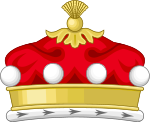
The House of Stuart, originally spelled Stewart, was a royal house of Scotland, England, Ireland and later Great Britain. The family name comes from the office of High Steward of Scotland, which had been held by the family progenitor Walter fitz Alan. The name Stewart and variations had become established as a family name by the time of his grandson Walter Stewart. The first monarch of the Stewart line was Robert II, whose male-line descendants were kings and queens in Scotland from 1371, and of England, Ireland and Great Britain from 1603, until 1714. Mary, Queen of Scots, was brought up in France where she adopted the French spelling of the name Stuart.
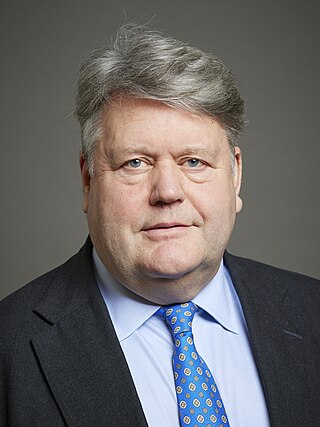
Thomas Galloway Dunlop du Roy de Blicquy Galbraith, 2nd Baron Strathclyde,, known informally as Tom Strathclyde, is a British Conservative politician. Lord Strathclyde served in the political role of Leader of the House of Lords from the 2010 general election until January 2013 and as Chancellor of the Duchy of Lancaster, having been Leader of the Opposition in the House of Lords (1998–2010). As of 2024, he is the most recent hereditary peer to serve as Leader of the Lords.

Earl of Enniskillen is a title in the Peerage of Ireland. It was created in 1789 for William Cole, 1st Viscount Enniskillen. He had already been created Viscount Enniskillen in the Peerage of Ireland in 1776 and had inherited the title Baron Mountflorence, of Florence Court in the County of Fermanagh, which had been created in the Peerage of Ireland in 1760 for his father John Cole, who had earlier represented Enniskillen in the Irish House of Commons. The family are descended from the Ulster planter, Sir William Cole.

Baron Manners, of Foston in the County of Lincoln, is a title in the Peerage of the United Kingdom. It was created in 1807 for the lawyer and politician Sir Thomas Manners-Sutton. He served as Solicitor-General from 1802 to 1805 and as Lord Chancellor of Ireland from 1807 to 1827. Manners-Sutton was the fifth son of Lord George Manners-Sutton, third son of John Manners, 3rd Duke of Rutland. His elder brother Charles Manners-Sutton was Archbishop of Canterbury from 1805 to 1828 and the father of Charles Manners-Sutton, 1st Viscount Canterbury, Speaker of the House of Commons from 1817 to 1834. The first Baron's great-grandson, the fourth Baron, assumed the surname of Manners only. As of 2010 the title is held by the latter's grandson, the sixth Baron, who succeeded his father in 2008.

Baron Newborough is a title that has been created twice in the Peerage of Ireland; both titles are extant. The first creation came in 1716 in favour of George Cholmondeley, later 2nd Earl of Cholmondeley. See Marquess of Cholmondeley for further history of this creation.

Baron Hardinge of Penshurst, in the County of Kent, is a title in the Peerage of the United Kingdom. It was created in 1910 for the diplomat the Hon. Sir Charles Hardinge, Viceroy and Governor-General of India from 1910 to 1916. He was the second son of Charles Hardinge, 2nd Viscount Hardinge. His son, the second Baron, served as private secretary to both King Edward VIII and King George VI.
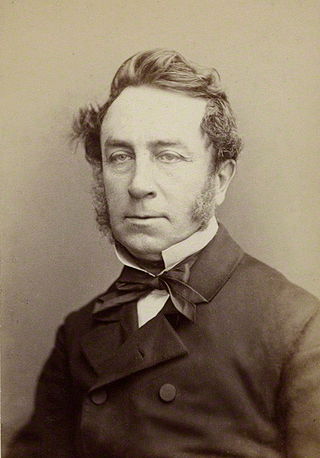
Baron O'Hagan, of Tullahogue in the County of Tyrone, is a title in the Peerage of the United Kingdom. It was created on 14 June 1870 for Sir Thomas O'Hagan, then Lord Chancellor of Ireland. His younger son, the third Baron, served as a Lord-in-waiting from 1907 to 1910 in the Liberal administrations of Sir Henry Campbell-Bannerman and H. H. Asquith and was later a Deputy Speaker of the House of Lords. In 1909 Lord O'Hagan assumed by Royal licence the additional surname of Towneley, which was that of his maternal grandfather. As of 2010 the title is held by his grandson, the fourth Baron, who succeeded in 1961. He is the son of the Hon. Thomas Anthony Edward Towneley Strachey. Lord O'Hagan was a Member of the European Parliament for Devon from 1973 to 1975 and again from 1979 to 1994, first as an independent and later as a Conservative. He assumed in 1938 by deed poll the additional Christian name of Towneley and the surname of Strachey in lieu of his patronymic. Strachey was the surname of his maternal grandfather Edward Strachey, 1st Baron Strachie.

Baron Nelson of Stafford, of Hilcote Hall in the County of Stafford, is a title in the Peerage of the United Kingdom. It was created in 1960 for the businessman Sir George Nelson, 1st Baronet, who for many years was Chairman of English Electric. He had already been created a Baronet in the Baronetage of the United Kingdom in 1955. He was succeeded by his only son, the second Baron. He was also Chairman of English Electric as well as a director of the Bank of England. As of 2024, the titles are held by his grandson, the fourth Baron, who succeeded his father in 2006.
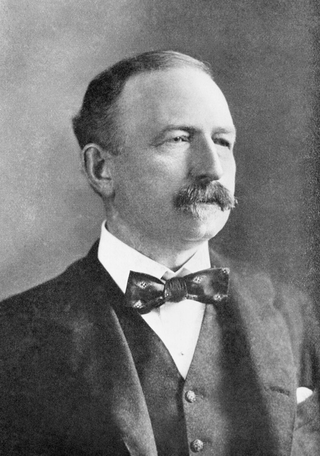
Baron Shaughnessy, of the City of Montreal in the Dominion of Canada and of Ashford in the County of Limerick, is a title in the Peerage of the United Kingdom. It was created in 1916 for the Milwaukee born businessman Thomas Shaughnessy, president of the Canadian Pacific Railway Company. He was succeeded by his eldest son, the second Baron, a Director of the CPR and of the Canadian Bank of Commerce. His son, the third Baron, was a businessman and was also active in the House of Lords. However, he lost his hereditary seat in parliament after the House of Lords Act 1999.
Baron Mostyn, of Mostyn in the County of Flint, is a title in the Peerage of the United Kingdom.

Baron Monteagle of Brandon, in the County of Kerry, is a title in the Peerage of the United Kingdom. Before his final exile, James II had intended the title to be conferred upon one of his supporters, Stephen Rice in the Jacobite peerage. Instead, it was created in 1839 in the reign of Queen Victoria for the Whig politician Thomas Spring Rice, a descendant of Stephen Rice. He served as Chancellor of the Exchequer between 1835 and 1839. He was succeeded by his grandson, the second Baron, his eldest son the Hon. Stephen Edmund Spring Rice having predeceased him. The second Lord Monteagle was a unionist politician and was made a Knight of the Order of St Patrick in 1885. On his death, the title passed to his son, the third Baron. He held minor diplomatic office. He was succeeded by his uncle, the fourth Baron. He was the younger son of the aforementioned the Hon. Stephen Edmund Spring Rice, eldest son of the first Baron. As of 2017 the title is held by the fourth Baron's great-grandson, the seventh Baron, who succeeded his father in 2013.
Baron Brocket, of Brocket Hall in the County of Hertford, is a title in the Peerage of the United Kingdom. It was created on 19 January 1933 for the businessman Sir Charles Nall-Cain, 1st Baronet. He was chairman of the brewing firm of Robert Cain & Sons, which had been founded by his father Robert Cain. Before his elevation to the peerage, Nall-Cain had been created a baronet, of the Node, in 1921. His son, the second Baron, represented Wavertree in the House of Commons as a Conservative. As of 2017 the titles are held by the latter's grandson, the third Baron, who succeeded in 1967.
Baron Bridges, of Headley in the County of Surrey and of Saint Nicholas at Wade in the County of Kent, is a title in the Peerage of the United Kingdom. It was created on 4 February 1957 for the prominent civil servant Sir Edward Bridges. He was Cabinet Secretary from 1938 to 1946. He was succeeded by his son, the second Baron, in 1969. He notably served as British Ambassador to Italy from 1983 to 1987. Lord Bridges was one of the ninety-two elected hereditary peers that remained in the House of Lords after the passing of the House of Lords Act 1999, before his removal for non-attendance in 2016. As of 2017 the title is held by his son, the third Baron, who succeeded to the title in that year. He was the solicitor to, among others, Queen Elizabeth II and other members of the royal family.
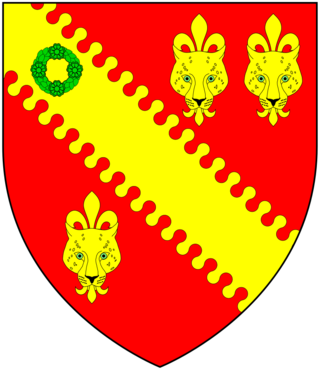
Baron Tennyson, of Aldworth in the County of Sussex and of Freshwater in the Isle of Wight, is a title in the Peerage of the United Kingdom. It was created in 1884 for the poet Alfred Tennyson. His son, the second Baron, served as Governor-General of Australia, and his grandson, the third Baron, as a captain for the English cricket team. On the death in 2006 of the latter's younger son, the fifth Baron, the line of the eldest son of the first Baron failed. The title was inherited by the late Baron's second cousin once removed, the sixth and present holder of the peerage. He is the great-grandson of Hon. Lionel Tennyson, second son of the first Baron.
Baron Catto, of Cairncatto in the County of Aberdeen, is a title in the peerage of the United Kingdom. The only hereditary peerage newly conferred during the reign of King Edward VIII, the barony was created on 24 February 1936 for the businessman, banker and public servant, Sir Thomas Catto, 1st Baronet. He had already been created a baronet, of Peterhead, on 5 July 1921. As of 2018 the titles are held by his grandson, the third baron, who succeeded his father in 2001.

Baron Rea, of Eskdale in the County of Cumberland, is a title in the Peerage of the United Kingdom. It was created in 1937 for the businessman and Liberal politician Sir Walter Rea, 1st Baronet, who had earlier represented Scarborough, Bradford North and Dewsbury in the House of Commons. He had already been created a Baronet, of Eskdale in the County of Cumberland, in 1935. He was succeeded by his eldest son, the second Baron. During the Second World War he served as personal staff officer to Brigadier Colin Gubbins, the Head of SOE, a key British intelligence and guerrilla operations agency. Lord Rea served as Leader of the Liberal Party in the House of Lords from 1955 to 1967. His daughter, the Right Hon. Ann Felicity Rea, married SOE veteran Malcolm Munthe in 1945. His nephew, the third Baron, who succeeded in 1981, was a physician. He was one of the ninety elected hereditary peers elected to remain in the House of Lords after the passing of the House of Lords Act 1999, and sat on the Labour benches. As of 2020 the titles are held by his son, the fourth Baron, who succeeded his father in that year.
Thomas Galbraith may refer to:
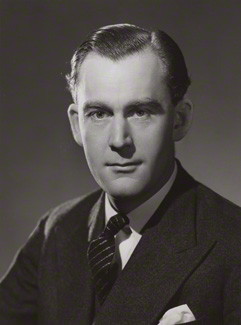
Sir Thomas Galloway Dunlop Galbraith, known as Tam Galbraith, was a Scottish Unionist politician.

There have been two baronetcies created for persons with the surname Arthur, both in the Baronetage of the United Kingdom. As of 2014 both creations are extant.

Thomas Dunlop Galbraith, 1st Baron Strathclyde, PC, was a Scottish Unionist Party politician.
